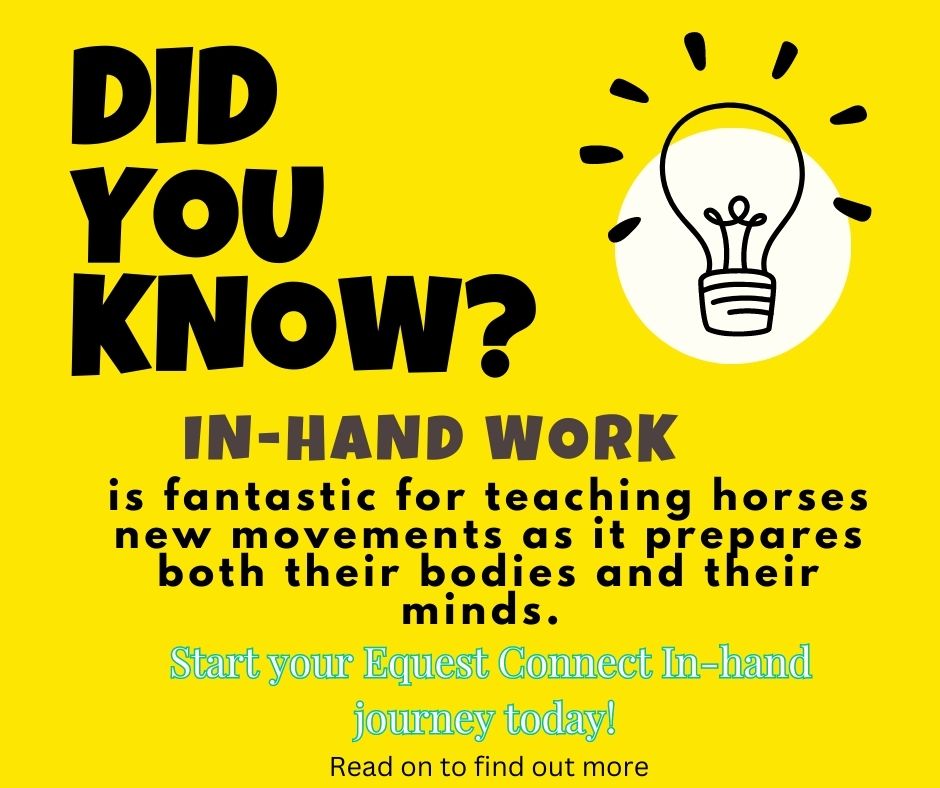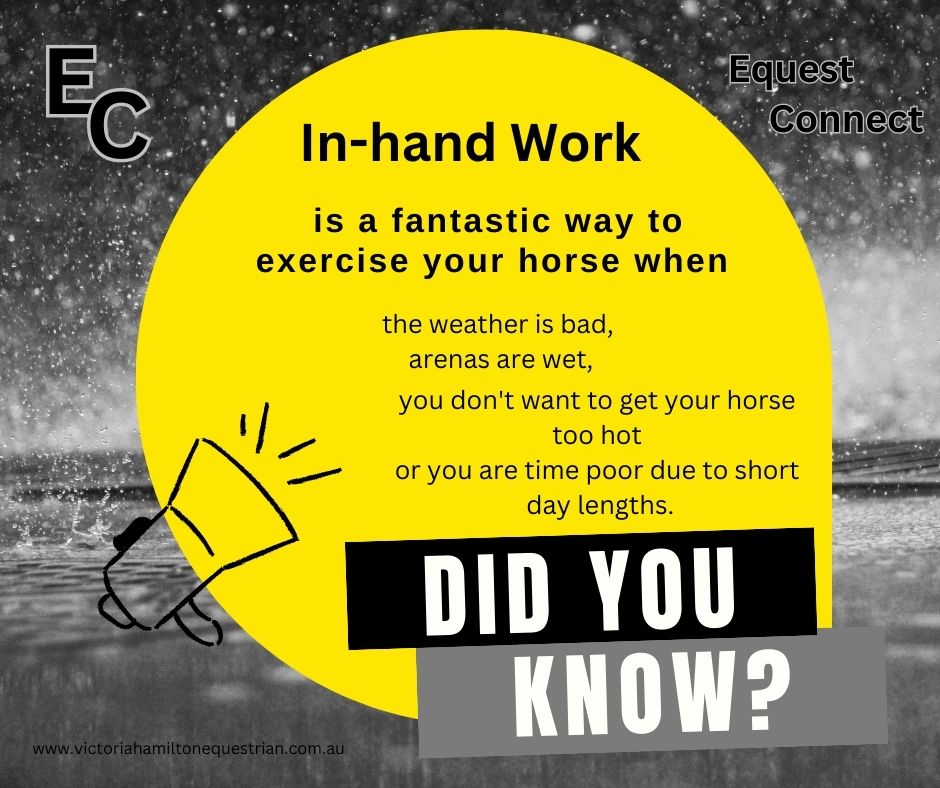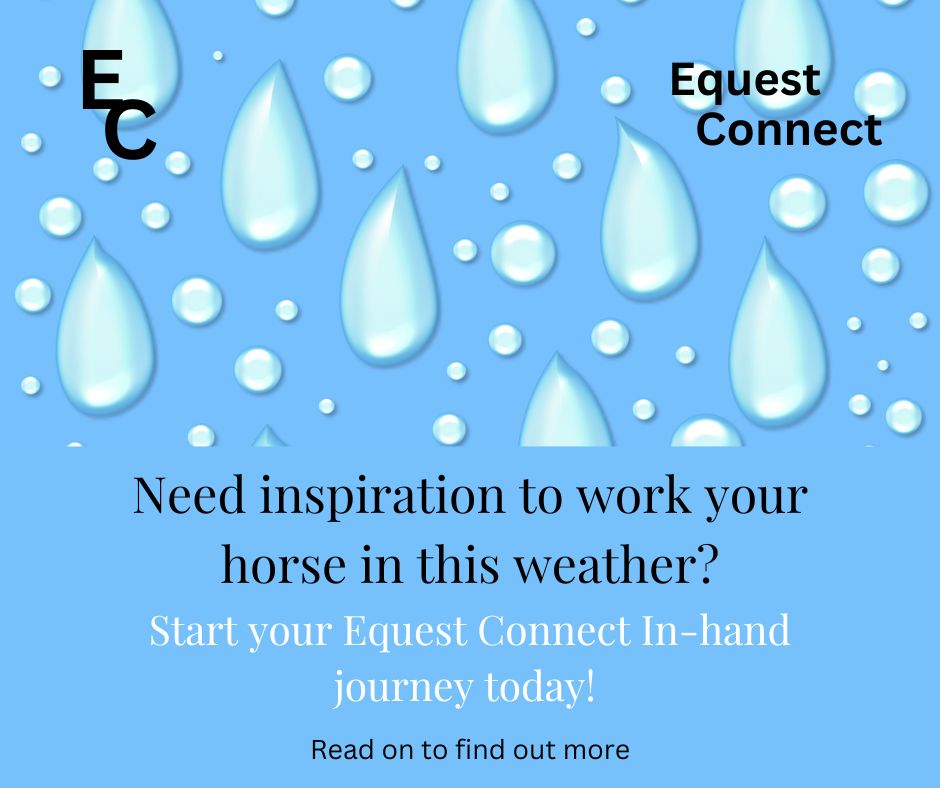|
Ideally horses should start in-hand before they are backed. This way they will understand what their rider will be asking of them when they are ridden as well as having a better understanding about their bodies. It prepares them both mentally and physically for their ridden career.
If the in-hand training is continued in parallel with the horses’ ridden career it should be possible to introduce all movement in-hand initially. This makes the ridden training flow easily and is better for the horses’ bodies and minds. They can learn to bend and later on to sit and carry weight on their hind legs before they have to do this with a rider on their back. Like all animals and people, horses really enjoy learning new movements, especially if presented to them in a logical manner, i.e. in small steps that build on each other. Equest Connect In-hand work does just this and in a way that is easy to transfer the aids to under-saddle by oneself. It is also incredibly rewarding and fun for both horse and rider!
0 Comments
Hasn’t it been wet lately!
When it finally stops raining, so many people’s arenas are recovering from the downpours and far from ideal to train properly. The shorter day lengths can make it tricky to work horses before/after school/work if you don’t have lights on your arena. Also if your horse is not clipped perhaps you don’t want to work him/her very long anyway so he/she doesn't get too hot and sweaty. A few days off here and there is never a problem for any horse and in some cases can be quite beneficial. However, after a while they can mount up and before you know it your horse is not looking quite like the superstar he/she normally does and certainly to ride does not feel as coordinated or supple. A few short sessions of in-hand work can prevent this from happening and is a fantastic way to ensure your horse maintains his core strength, suppleness and mentally in-tune. There are many different versions of in-hand and they all serve different purposes. You need to find one that doesn’t conflict in any way with what your riding goals are. By this I mean both in the aids that you give your horse as well as the movements that you are asking your horse to do and the way you expect them executed. Maybe this sounds logical but it is very common for people who come through the Equest Connect in-hand course to be surprised about how they could ask and perform movements in a different manner so that they were more easily transferrable to under saddle from the horse’s point of view and also of greater benefit biomechanically. In-hand is easy, fun and incredibly addictive when you truly understand what you are doing and have a logical path to follow. You will be amazed at how much happier your horse will be in all aspects of his/her life, from basic handling to any type of riding. Are you fed up entering events only to find thunderstorms on the day or flooded grounds?
For some riders, competitions are what motivates them to ride and gives them the ideas of what and how to train. This is not such a bad thing as all tests, no matter if they are for pure dressage, eventing dressage or working eq, follow a logical training path. Why not declare this Winter a time to train and learn something new? Maybe think about what level you would like to do next season and start some in-hand sessions to help your horse on his/her way. If you are prelim then make sure your horse is really solid in his/her understanding of leg yield in-hand and can vary the angle without altering the tempo, alignment, contact or frame. This will set you up so well for when you start Novice. If you are novice and working towards elementary it would be super if your horse could learn shoulder-in and travers/renvers as well as turn-on-the-haunches. This sounds really hard but when broken down into simple steps and reactions all horses can easily do these. From this it is easy to progress to half-pass and pirouettes and later to introduce work to close the horses’ body and increase the flexion and weight bearing capacity of the hindlegs. Ideal for all horses to become stronger but particularly those destined for an FEI dressage career. The Equest Connect in-hand program has been developed to systematically introduce these movements and is easy and fun for both horse and rider. It really improves the horse’s straightness, suppleness and understanding of the contact. Best of all you will notices huge changes in your horse under saddle for only a short investment of time in-hand! Do it! It’s fun, incredibly beneficial and you’ll love it! |
AuthorDr Victoria Hamilton is an icon in the Australian Equestrian Community, with a wealth of experience as a veterinarian, coach, breeder and international dressage competitor. As one of Australia’s top dressage riders, her love of horses is contagious and apparent in everything she does. Archives
February 2024
Categories |




 RSS Feed
RSS Feed